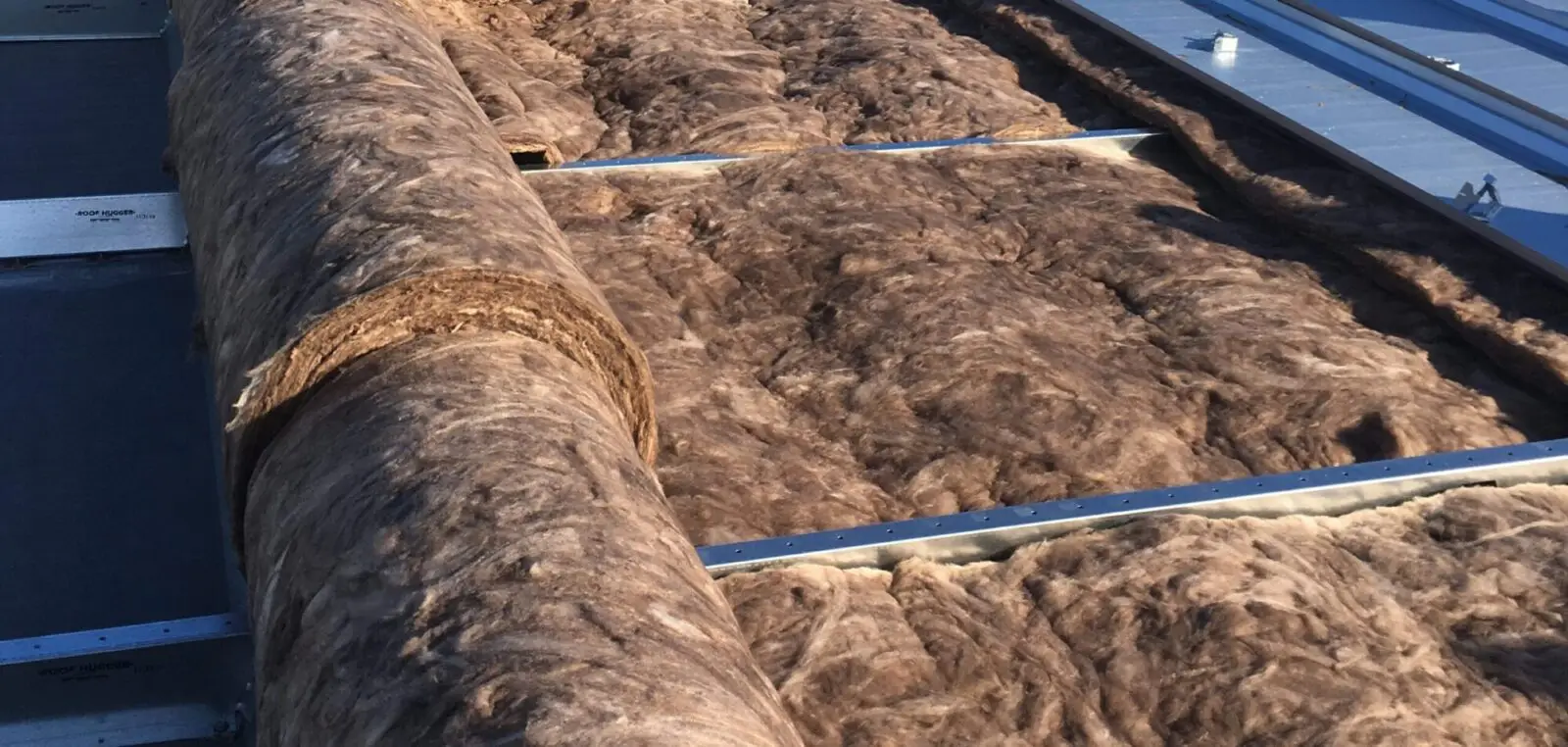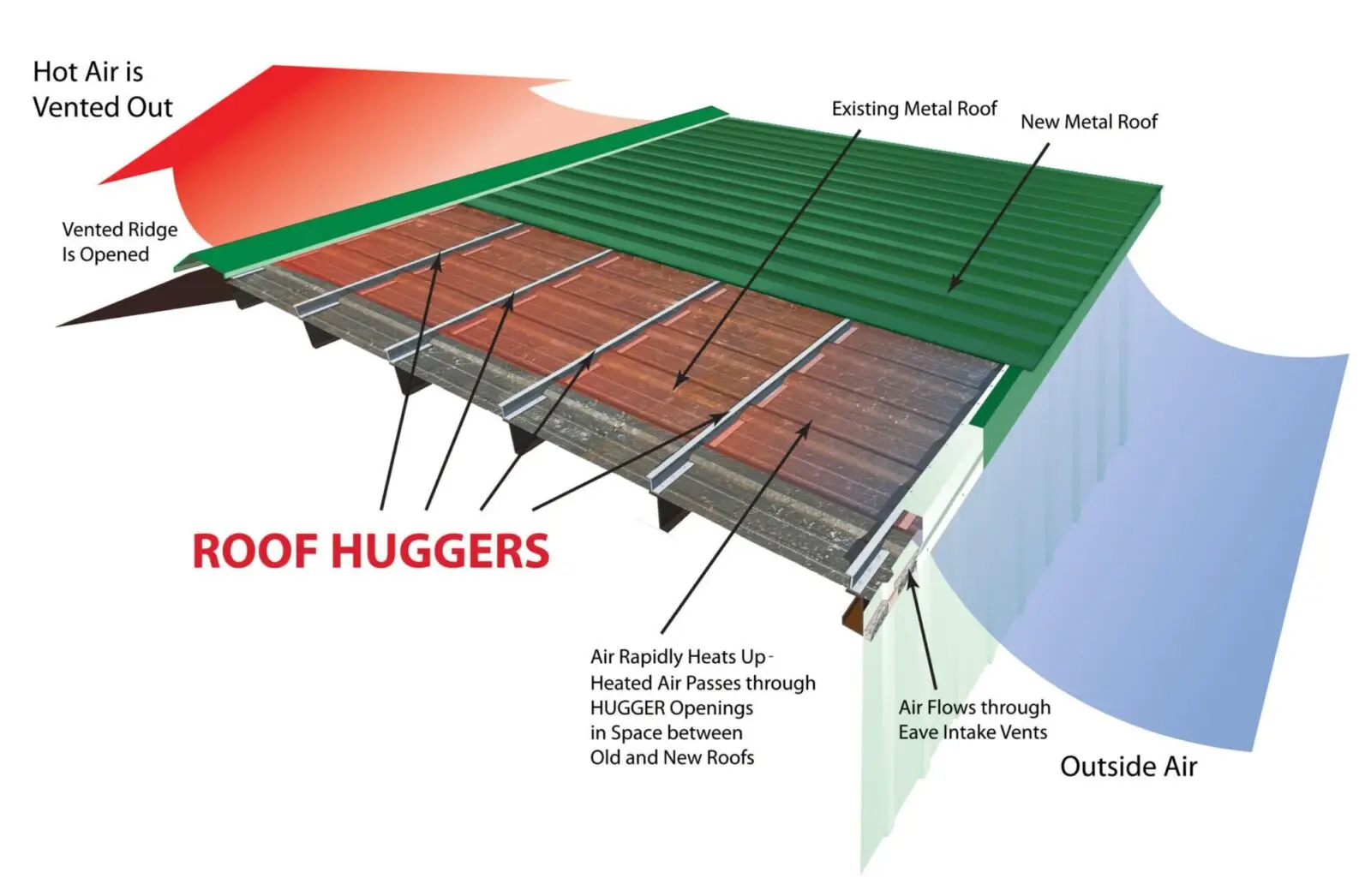energy savings
Start Saving Energy Today
Boost thermal efficiency, lower costs, and reach your green building goals
energy savings
Start Saving Energy Today
Boost thermal efficiency, lower costs, and reach your green building goals


energy savings solutions
Adding Insulation
When you install Roof Huggers, the air space between the existing old roof and the bottom side of the new roof is well suited to install insulation for increasing the building’s thermal resistance. This is a very effective and inexpensive measure to save those energy dollars. Case studies have shown between 21% to 25% reduction in heating and cooling cost per year. (Each case is different and depends on the building’s occupancy and locale.)
Typically, fiberglass blanket insulation of varying thicknesses is installed but many building owners and design professionals will opt for rigid insulation. Both examples shown.
how does above sheathing ventilation (ASV) system dynamics work?
The illustration to the right represents a re-roofing assembly that employs both new insulation, radiant barrier and ASV dynamic ventilation for High-R systems with thermal resistance as much as R-50.

energy efficient retrofit assemblies
Retrofitting a roof with Roof Hugger creates any number of possibilities for improving the energy efficiency of an existing building. The height of the Roof Huggers can be specified to accommodate any thickness of fiberglass or rigid insulation. Above sheeting ventilation can be incorporated, glycol tube heat recovery coils can be added, high efficiency tall clip standing seam panels can be used and bracket or laminate photovoltaic panels can easily be added on the new panels without panel penetrations.
If photovoltaic systems are to be added, typical 40-60 year life metal roofing is the only roof system that will outlast the useful life of the photovoltaic panels. This eliminates the huge cost of photovoltaic removal, re-roofing and reinstallation of the photovoltaic system typically required at the 15-20 year mark for conventional roofing materials.
Benefits:
- save on energy costs
- Lower maintenance costs
- Increase the building’s thermal resistance (R-value)
- Reduce energy consumption
- Help reduce heat gain in the summer and heat loss in the winter
- Meet sustainable building goals
- Prevent demolition waste in landfills
See how the Security Forces building at Goodfellow Air Force Base’s new metal-over-metal retrofit roof integrates cool roofing, solar-power generation, solar thermal, rainwater catchment and above-sheathing ventilation in one holistic system.
“With the local utility costs taken into account, Goodfellow Air Force Base is estimating a savings of $11,750 per year on this building thanks to the retrofit roof.”
Retrofitting Saves Energy and Money
Upgrade to modern, standing-seam roofs: Shift from older, fastened metal roofs with minimal exposed fasteners, no significant structural modifications needed.
Create an Airspace
The retrofit process forms an airspace between the old and new roof, enabling the addition of insulation for improved energy efficiency.
Transform Buildings
Transform conventional storage buildings into climate-controlled structures.
Above Sheathing Ventilation
Utilize the created airspace to establish a dynamic, convective ventilation system, reducing heat transfer through the roof assembly by up to 45%.
Photovoltaic Solar Panels
Install photovoltaics without roof penetrations. The new standing seam metal roof is the only long-life roof that will outlast the solar panels saving thousands!
Energy Savings and Revenue Generation
The solar panels not only provide electricity but can also generate revenue through energy sell-back programs. Air cavity heat recovery can be used to pre-heat mechanical and HVAC systems.

